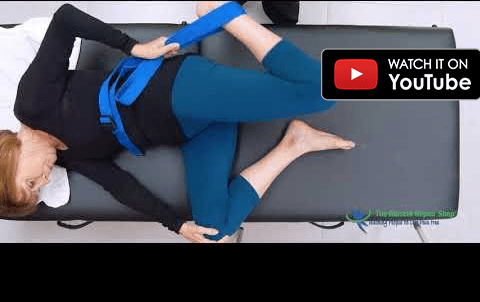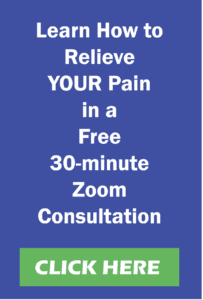Sadly, common bike injuries have curtailed many a happy biker’s favorite pastime.
Biking can be fun, a great cardio workout, and cheap transportation to get around town. I remember as a child riding my bike with my friends, hair blowing in the air, and I felt free. It felt like I could ride my bike forever and nothing ever hurt. I was 12 years old. At 61, I still love riding my bike, however after a day of riding my bike, I feel a little stiffness creeping in as the night comes on.
In my practice I work on several clients that are serious bikers. I have seen and treated these common bike injuries and have learned what really works. Each sport has its own set of injuries based on the movements of that sport; biking is no different.
Since the beginning of the pandemic, there have been many more people riding bikes than ever before. Like most people, we don’t think about the typical injuries until they occur. Hardcore bikers do think about them because they have them, however the treatment of those injuries can leave them out of biking completely or make it difficult to continue. Most bike injuries I see are low back stiffness, shin injuries and neck and shoulder injuries. We are going to talk about some of those injuries and how you can improve them.
The Three Groups of Common Bike Injuries
Pain in the Shins
Let’s begin with the shin injury as that is the easiest to solve. People who ride long distances and are serious bikers usually use clip-in shoes that clip into the bike peddle. Since the shoe clips into the peddle at the ball of the foot, this eliminates most of the shin pain as the pressure spreads more over the entire foot. Recreational bikers have a tendency to ride like a kid and push down hard with their toes for more speed. This can overwork the shin muscles leaving you with shin splints.
If you are beginning to feel some pain in your shins or towards the outside bottom part of your knee, chances are your shins are tight.
Sit in a chair and cross one leg over the other so your ankle is resting on the opposite knee. Wrap your fingers around your lower leg of the crossed leg. Slowly work up and down the lower leg just below the shin bone and downward about 2 inches. As you press, feel if it is sore. If so, hold for a few seconds, breathe out and let the muscle relax. Repeat this up and down the shin until the pain stops. Do both legs even if only one hurts, because the other leg isn’t far behind in pain.
Low Back Stiffness
Low back stiffness is a sign of tight quad muscles. These 4 muscles are located on the front side of the thigh. If you have ever seen an avid biker, their thighs are usually much larger than the average person. While biking is great for strengthening the thighs, it can wreak havoc on the low back. A stationary bike in the gym can create the same pain.
Most people try to stretch their quads by standing on one foot and pulling the opposite heel to their hip. This will not stretch the thigh; however, it can help in strengthening the calf to help with balance.
Subscribe here if you would like to view the correct quad stretch bikers should do every day, twice a day.

Rather than stretching the quad while standing, use a yoga strap on a mat.
Stiff Neck and Shoulders
Neck and shoulders are another serious area for bikers. For avid bikers tight neck and shoulder muscles can cause numbness down the arm to the hand. It can cause a pinched nerve in the neck and make your neck stiff during the day. Many people have given up biking after several failed treatments or even surgery to correct this tightness and pain.
The tightness in the neck and shoulders comes from leaning forward on the handlebars and looking up. The recreational biker usually rides with their hands on the handlebar, elbows slightly stiff and the head a little higher. The weight of the upper body is on the wrist and outside chest area. This can lead to hands going numb or stiffness in the neck.
For the avid biker using the curved dropped handlebars common on road bikes can support their forearms and they lean down onto their elbows. This reduces the numbness in their hands and arms but puts a lot of stress on their necks as they look up to see where they going. In both cases the chest, especially the outside chest muscle, will shorten causing the shoulders to round. When you stand, the head will lean forward due to the tight chest and the neck will hurt. When the muscles get tight enough, they will cause severe compression on the cervical spine, the neck, leading to pinched nerves and damaged discs.
A great stretch for the outside chest muscle involves leveraging a doorframe or post to stretch the pectoralis minor. SIGN UP to view a video demonstrating this stretch.
A simple stretch for the neck is to sit in a hard-backed chair, lean slightly forward, and place your head in the palms of both hands. Feel the weight of the head and gently lift your head with your hands toward the ceiling. Do not use the muscles in the back of your neck and do not worry about how far the head goes back. This is not a competition, but an opportunity to release the muscles on the front of your neck. Hold for 5 seconds each and repeat 10 times.
You can also use a tennis ball on your upper back to soften the muscles against a wall.
SUBSCRIBE to view all the videos that demonstrate Stretch n’ Release exercises to prevent bicycling injuries and reduce pain.
Want to Talk with Me Directly? Start Here
We’re happy to offer you a complimentary 30-min virtual consultation so you can experience this for yourself. Schedule your introduction to Stretch n Release now.
About The Muscle Repair Shop
Drawing upon his personal experience as a former competitive athlete turned wheelchair, obese and chronic pain sufferer, Muscle Repair Shop Founder Butch Phelps decided to take his health into his own hands when at the age of 36 he was told he might not make it to his 40th birthday. Applying balanced nutrition advice from his doctor along with a sound exercise program, he went from 315 lbs. to 180 lbs. Motivated by his experience, he then acquired degrees in advanced therapeutic massage and aging sciences to help people eliminate chronic pain. This included applying his expertise in how people age, including the effects of dementia, anatomy, psychology, and the day-to-day struggles living as an older person to his practice and development of The Muscle Repair Shop’s one-of-a-kind Stretch n’ Release Technique.
Available through in-office and virtual coaching treatment sessions, this unique combination of stretching and breath work teaches the brain to release the emotional side of muscle tension and pain allows clients to find lasting relief and healing from stiffness, aches, injuries, and chronic pain. The at-home exercises come with customized instructional videos and virtual or in-office support, allowing clients to enjoy and experience life and sports as they did before limitations slowed or curtailed activities.

